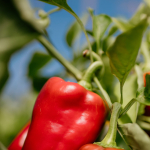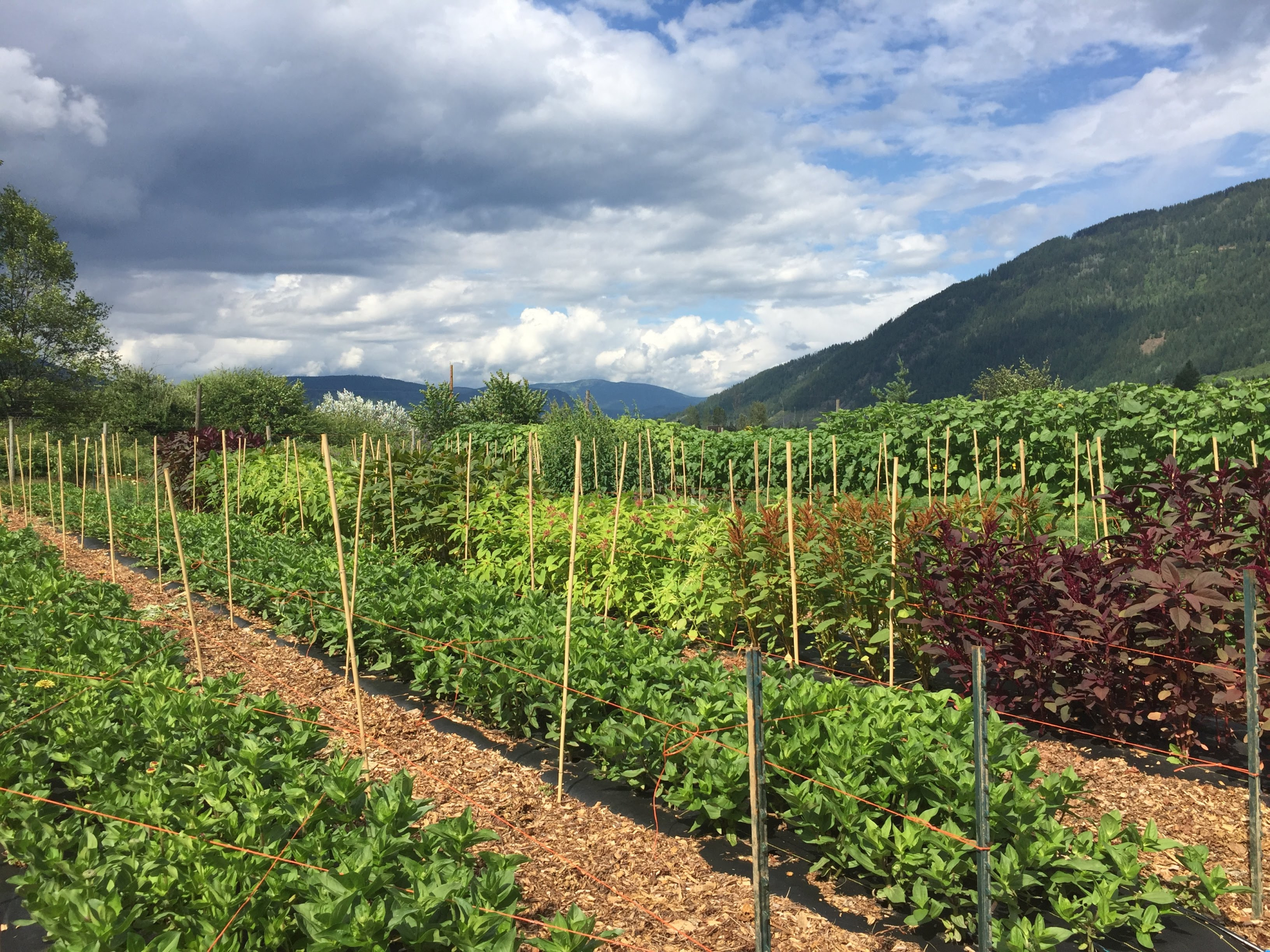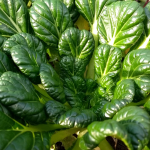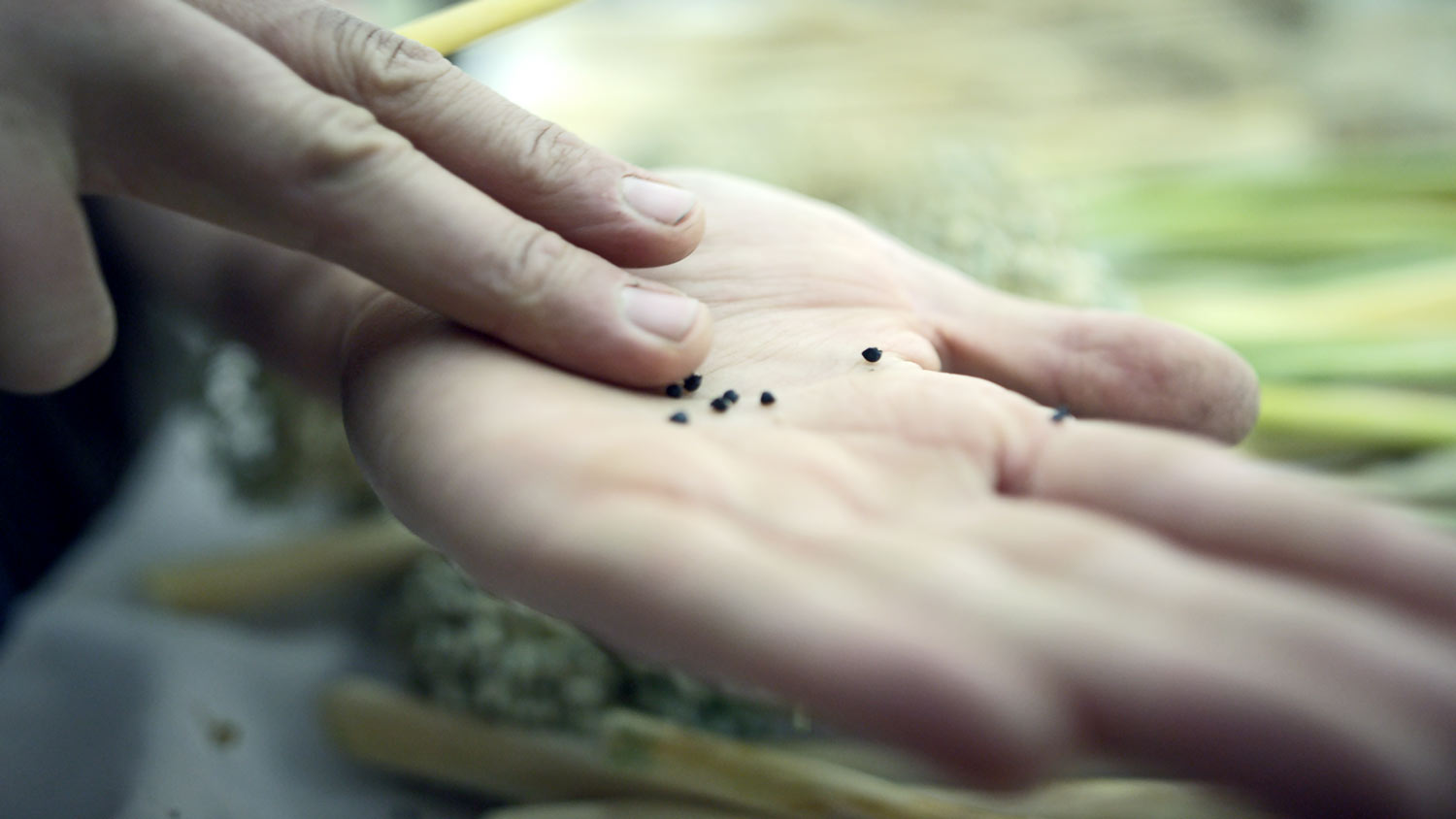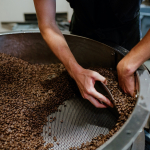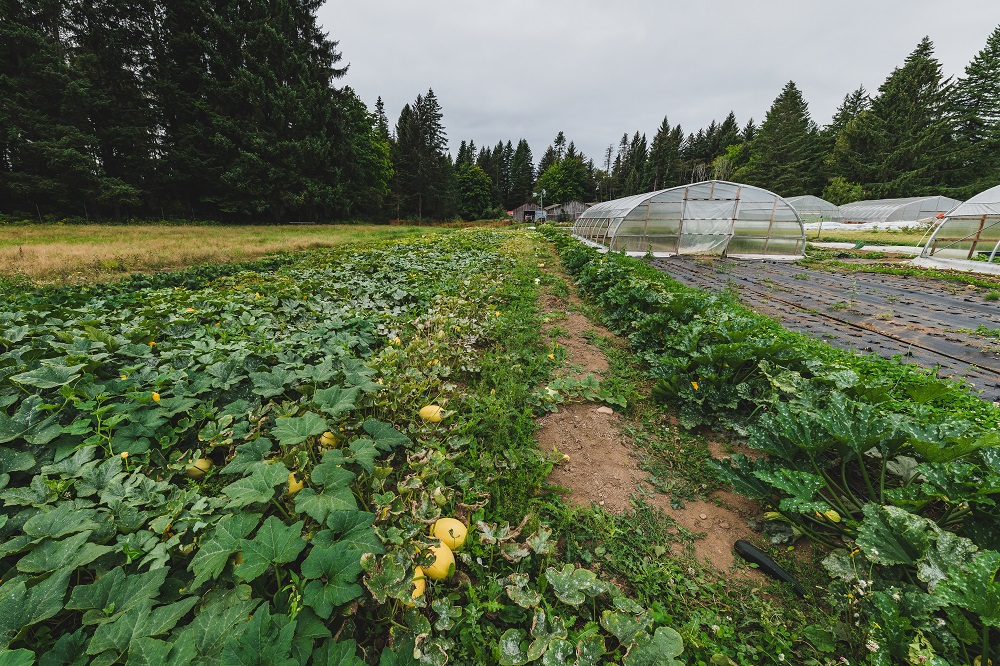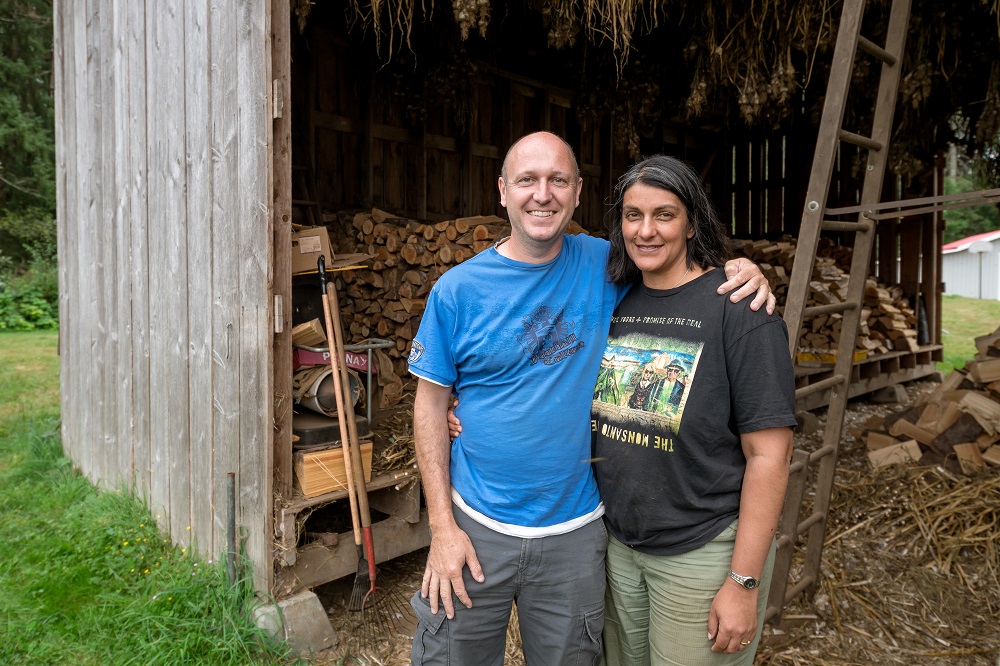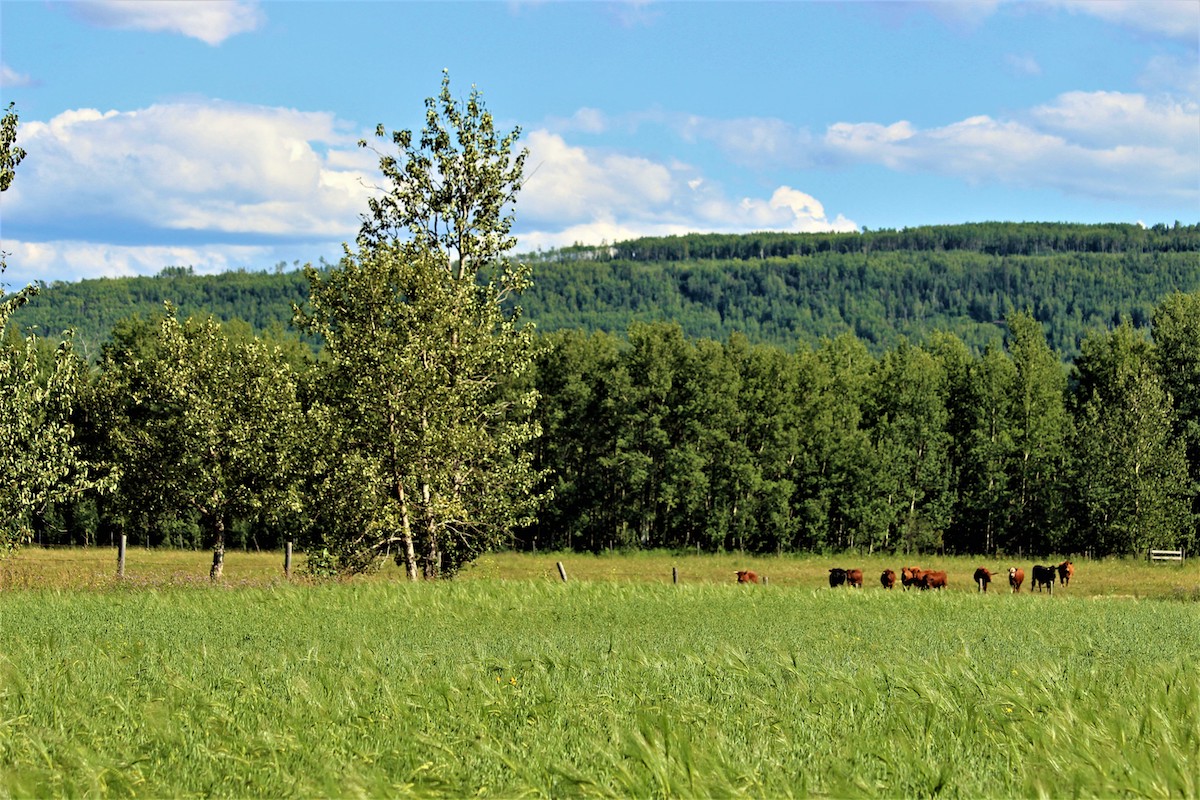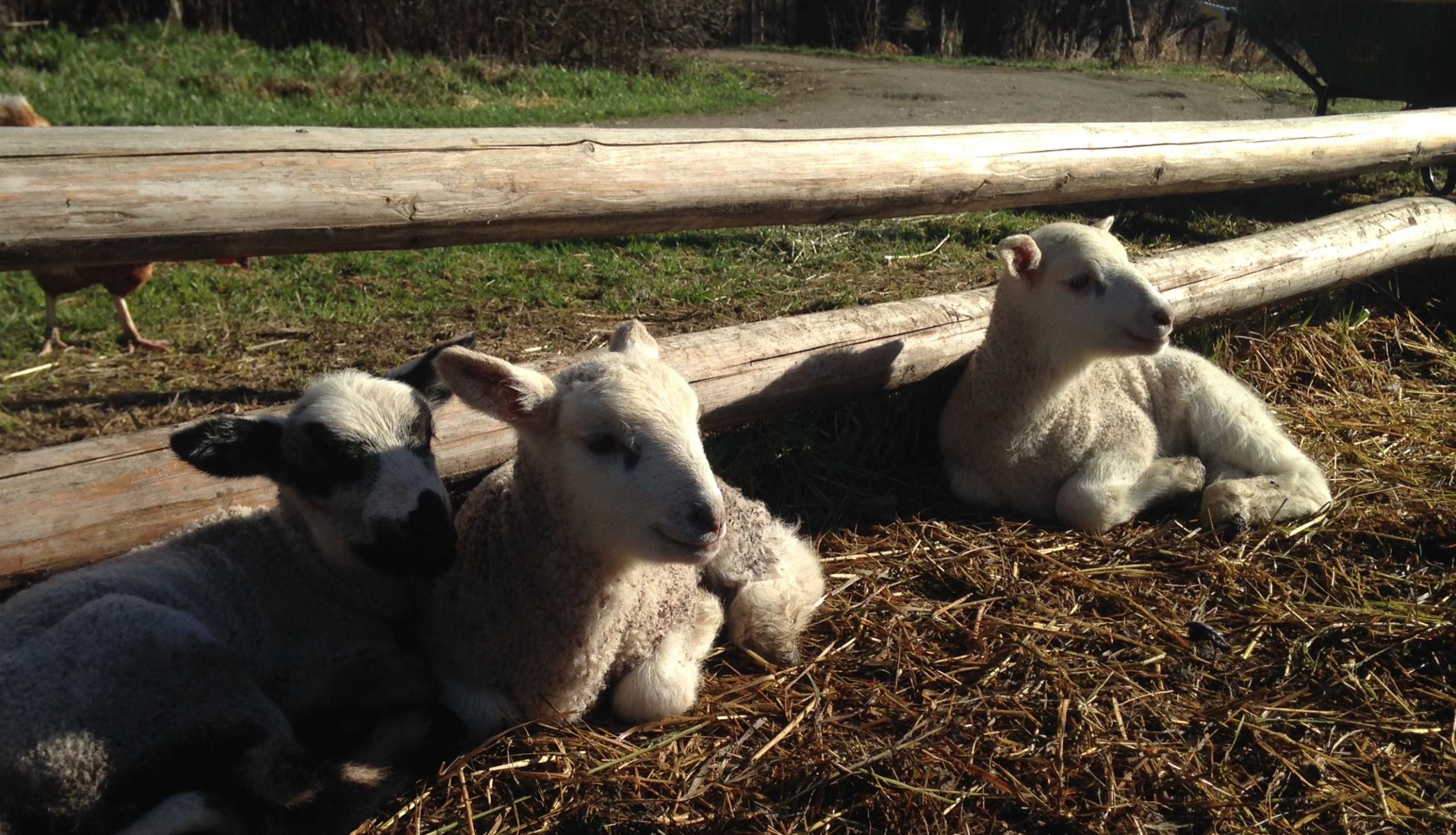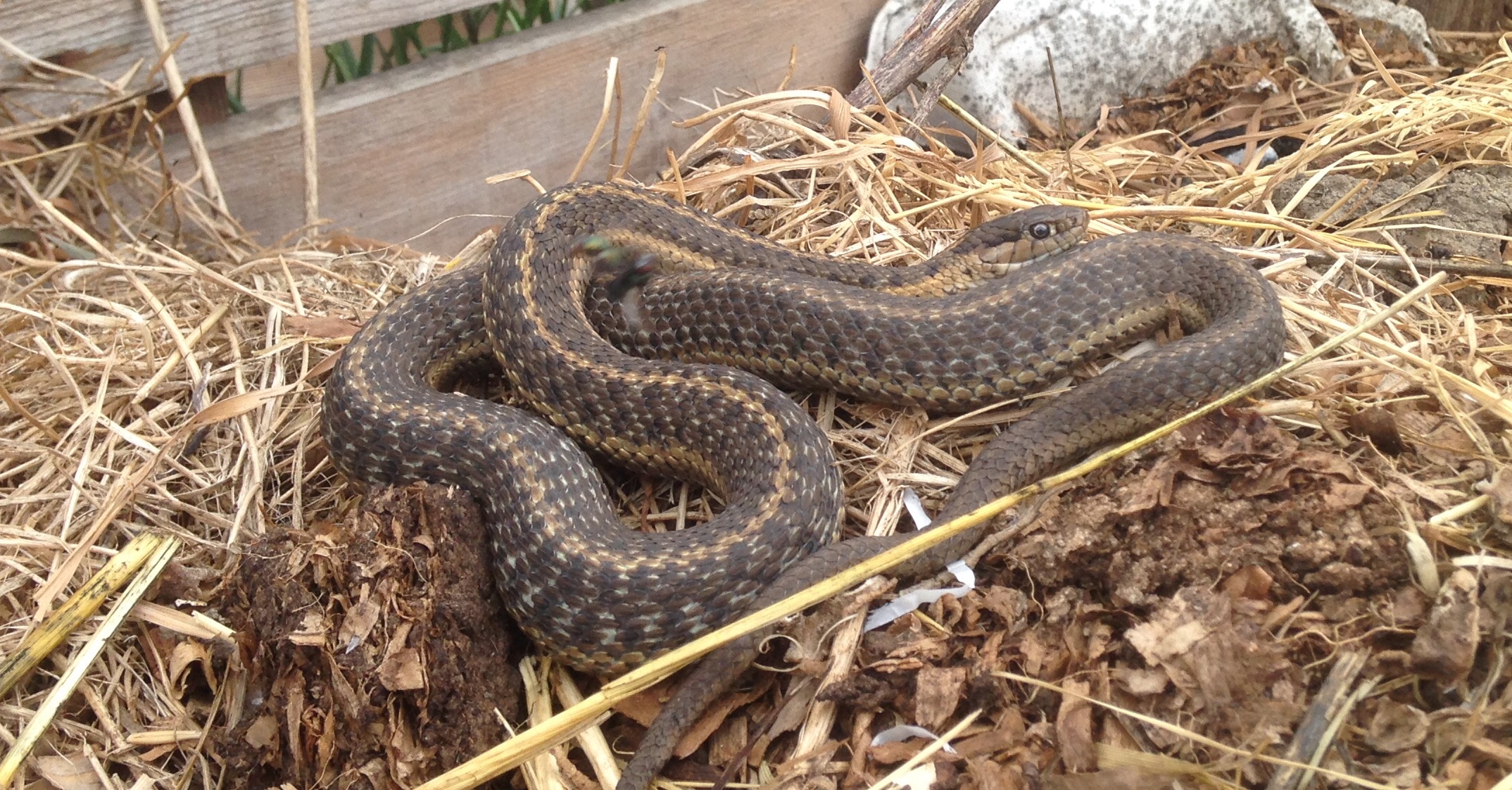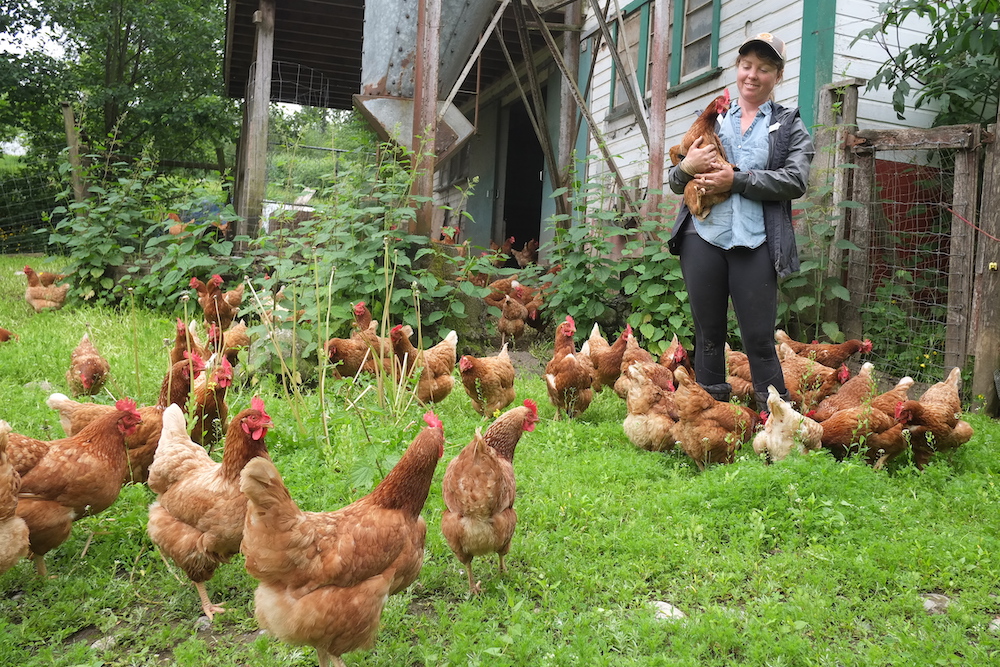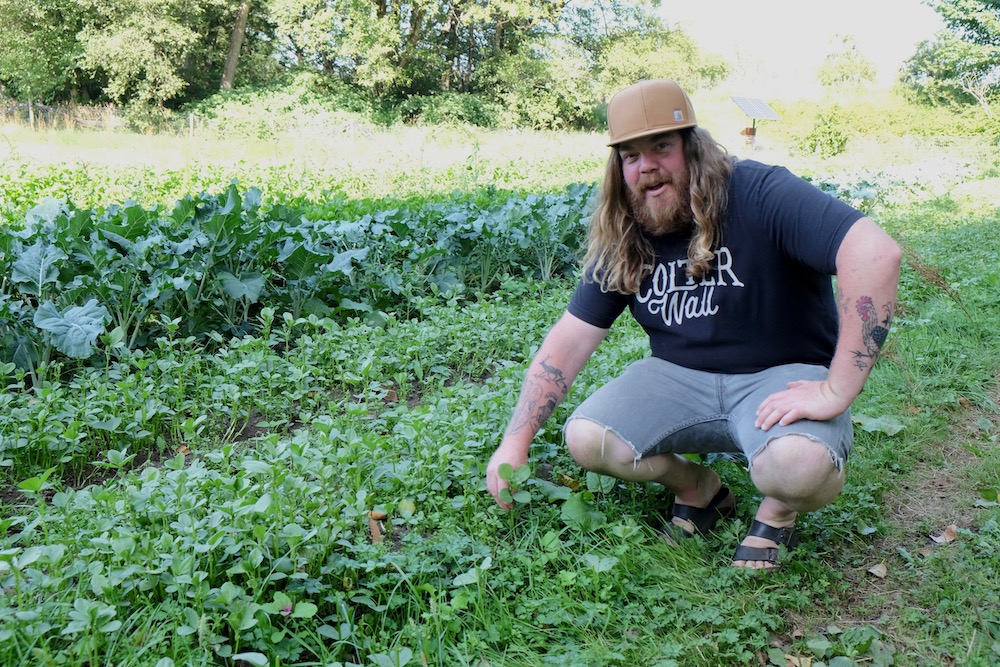A Summer of Drought, Heat Waves, and Fire

It is definitely a topsy-turvy world right now—so much is out of balance as we can see in the wildfires around us, as well as flooding and more fires around the world. We’re feeling for Mother Earth and recognize the shifts that humans (particularly the extractivist, endless-growth mindsets) need to make to start to repair what we have messed with (which is a LOT). We are grateful that things aren’t so out of balance that we can still grow good food for family and farm friends, building relationships, and where we can do better, be better.”
~ Michelle Tsutsumi, Golden Ears Farm, Chase BC
Throughout the province, temperatures reached record highs in late June, with seasonal temperatures fluctuating in the high 30’s for long periods of time in the Interior. Smoke from hundreds of fires choked out the sun and left the earth and plants parched for water and sun scorched. What follows is a collection of stories from organic farmers in their own words and as told to Marjorie Harris. Gratitude to the farmers who shared their harrowing experiences and stories of community coming together.

The biggest impact of the fires has been on our own mental and physical (respiratory) health. It wouldn’t even be that bad if it wasn’t on top of this ongoing drought, but as it is, the uncertainty of the situation is a lot to deal with.”
Annelise Grube-Cavers, Fresh Valley Farms, Armstrong
Coping with Heat Waves & Drought
By Marjorie Harris
The cherry crop experienced losses of 30% due to extreme temperatures up to 51 degrees for one or two days, followed by extended days of extreme temperatures. The cherry harvest was just beginning and the cherries were burned up, basically dehydrated and shriveled on the trees. One full block had to be abandoned. Many cherry farmers in the area lost entire blocks of trees to heat and water demands causing orchard abandonments.
~ Jarnail Gill, Blossom River Organics, Keremeos
At the end of June, the Oliver area was hit with two days of 47 degree temperatures, which then stayed over 40 degrees for many days. If the plants were not given enormous amounts of water they would have dried out. Hans used 40% to 50% more water this year than ever in his 40 years on the vineyard. Because of the high heat the evapotranspiration rate is very high and the water is needed by the plant to cool itself. If there is not sufficient water for the plant to do this the stomata on the leaf will close and the plant will completely shut down growth. The plant can burn up if it can’t cool, or take three to four weeks to start again. Also, some winter hardiness could be lost if the plants come back too late in the season. Therefore, the only choice available to save the plants and the vineyard was to water. Pumping from the well does have limited resources and thankfully not as much water is needed now. High temperatures combined with the large amount of water the vines did go into leaf growth. The bunches are very uneven in size and most are smaller berries that will not size up. Harvest season looks like it may be two weeks ahead.
~ Hans Buchler, Park Hill Vineyards, Oliver
In late June, temperatures soared over 40 degrees for five days peaking at 45 degrees. The Sunrise is our first summer apple and the first to be assessed for the damaging effects of the very intense heat that we had so early in the season. While the sun burning to the most exposed fruit is very deep and unsightly, it doesn’t appear to have affected a large percentage of the Sunrise crop. There may also have been some premature ripening in some of the Sunrise but on the whole pressures seem to be holding steady. Harvest dates are about the same as last year. Sunrise apples like most summer apples have relatively short storage life and don’t seem to be affected by internal quality issues as may be the case for some of the later apple varieties which rely on their storability.
~ Sally and Wilfrid Mennell, Sally Mennell’s Orchard, Cawston

David is a third-generation apple farmer in the BX area of Vernon, where temperatures reached over 44 degrees. The cider apple orchard is on a metered municipal treated water system. The trees needed more water than ever before, but a balance had to be made between keeping the trees alive and the economics of paying more for metered water than the business can afford. David admits to running on gut instinct to keep the orchard going all around. Far less scab sprays were applied. The apples are smaller across the whole orchard.
David explained that once temperature goes above 30 degrees, the trees shut down growth and the apples stay small. David shows me how on the hottest days the sun scorched the south facing fruit, baked to apple sauce on the trees, and now the hardened skins have split. The Gala and the Ambrosia hold the sun-damaged fruit and these have to be hand removed. As a third-generation farm, some blocks still have very low-density plantings; the large leafy canopies on these trees helped to protect the fruit. Overall, David says it looked like the orchard was starting to recover from the first heat wave and now with the second heat wave upon the orchard the growth is definitely slowing, “but who knows how the season will turn out,” David says, grinning a big smile.
~ David Dobernigg, The BX Press, Vernon
Saving the Farm
By Marjorie Harris with story from Rob Vanderlip: Zaparango Organic Farm, Westwold
The farm was blanketed with thick smoke for weeks before the fire arrived. The last planting of potatoes was struggling and lanky with the sun for photosynthesis. After the fires, the potatoes grew like crazy with steady fire prevention irrigation, hot weather and lots of carbon dioxide, green growth for weeds and crops vigorously filling out the plants.
On Aug 5th Robert Vanderlip, his son Chelan and everyone else in Westwold were ordered to evacuate from the approaching out-of-control fire that had just left Monte Lake as scorched earth. Rob, 69 years old, and Chelan, 32, opted to stay and try to save the family farm by fighting the fires.

In Rob’s own words he said “On Thursday, August 5th at 5pm the fire came over the forested mountain from Monte Lake like a locomotive engine barreling down his dried out native grass hayfield, then stopping at the green alfalfa and corn fields, to split east and west back into the forest and down the railway tracks heading into the town of Westwold. The flock of 70 sheep, free ranging ducks and chickens crowded into the green pastures.”
Rob and Chelan sprung into action pulling the 200 gal Turbo-mist sprayer tank with the Massey 35 diesel tractor to hose-down the understory along the railway tracks and put out fires in the circuit around the farm. One hour into the firefight electric power was lost to pump water from the wells to fill the sprayer tank. Fortunately, one of the wells was located high enough upslope to gravity feed fill the sprayer tank and keep the livestock troughs constantly full with water. Fire crews from Alexis Creek arrived in two hours and the Kelowna fire department also responded by 10pm but there was no power to fill the fire crew tanks. Rob and Chelan had set up sprinklers, and by 4am they had succeeded in preventing fire from entering Westwold.
The Zaparango family farm lost a hydro pole, two tool sheds and thousands of dollars in tools on day one of the fire. The fire battle on the homefront lasted another seven or eight days. Rob and Chelan volunteered and then were hired on by BC Wildfire service as guides for the roads and terrain of the fire suppression area.
Rob highly recommends that everyone keep gas generators with fuel on hand for emergency power. His 120-volt generator kept five freezers, three fridges and the fuel pump going throughout. A 240-volt generator was brought in on August 7th to power pumps for the two domestic wells to fill fire fighting water tanks.
Fire Evacuation
By Tristan Banwell, Spray Creek Ranch, Lillooet
As I steered my tractor through the corners on my biggest hayfield, the thermometer was showing temperatures in the high 40s and humidity below 10%. I watched an enormous pyrocumulus cloud form to the north as the McKay Creek Fire took hold. The following afternoon, smoke rapidly plumed to the south as our sister town of Lytton was devastated. The days that followed feel like weeks in my memory. The whole team shifted to fire preparations—ensuring livestock were in safer locations, setting out water lines to protect structures, and clearing away flammable items. The farm crew displaced from Solstedt Organics in Lytton showed up the next night. (The Standard requires that organic farm evacuees relocate to another organic farm… Just kidding.) After just 36 hours came the 3am evacuation order—text alerts and officers knocking at the door. By 9am, 11 farm residents and several recently arrived evacuees were dispersing with beloved possessions to other safe locations, and I was left to plan, prepare and take care of the livestock.

Thankfully for us, the evacuation order was premature (better than late!) and the crew and family returned days later. I learned a lot from the experience. We went into this somewhat prepared—the buildings are fire-resistant, fuels in the forest are managed, most tools we need are around here…somewhere… But, all those wildfire plans are in my own head, depending on me to direct implementation. The farmstead looks different under threat of fire than it did the day prior, and we realized a lot more can be accomplished in advance. The tools need to be staged, the preparations need to be completed before the emergency, and the plans need to be on paper. We need backup power in case the grid goes down.
I learned that there is a network of support out there, but when you need those extra hands, it could be too late or unsafe. I also learned that although friends and family were concerned that I would be in danger from the fire itself, the risks I faced were familiar. Working alone. Operating machinery. Making decisions and taking action while affected by fatigue and stress. It is crucial to take time to rest and recover, even when it feels that every moment counts.
In so many ways, we have been fortunate thus far through the difficult summer of 2021. Our creek-fed irrigation water is holding up. The wildfires throughout the Interior have not yet raged through our farmstead, pastures and range. The systems we have in place to protect our livestock from the intense heat have worked. Some of this is luck, some is good planning and preparation. Even as we build diversity and resilience into our agroecological systems and businesses, we always rely on a little bit of grace from Mother Nature. This season has been a good reminder that we must also prepare for moments when there may be none.”

Running on Fumes: Solstedt Organics
By Ashala Daniel, Solstedt Organics, Lytton BC
On June 30th, a CN train sparked just outside the town of Lytton, the closest town to my farm. Within half an hour, the town had burned to the ground. My land partner’s son had a place in town and raced to see if he could save anything but couldn’t even make it into town as there were propane tanks exploding and the whole town was on fire. That night, I sat in my pond and cried. For the town and for fear of that fire jumping the river and coming towards us.
We were evacuated from the west side on Thursday and I travelled to the city to deliver to restaurants and sell at the Trout Lake Farmers’ Market. It was surreal being in the city, crying a lot, putting out a donation jar for Lytton, while back at the farm, the fire had indeed jumped the Fraser river and was burning just five miles south of the farm.
My husband travelled back to the farm on Sunday with me as locals had been fighting the fire for three nights and needed relief. BC Forestry had only just started to show up. A friend joined us and they joined the local crew fighting the fire at night while Forestry fought it during the day. I made food, irrigated my and my neighbour’s farm and harvested. Again, it felt so pointless, but it was all I could do. A crew from New Brunswick showed up and were stationed at our fire for 14 days, evacuation orders were lifted and people started to return to the farm.
Since then, it has been a struggle with the Thompson-Nicola Regional District to travel roads to the highway, making our journey seven hours instead of four. The fire continues to burn and now First Nation communities south of us have been evacuated. The Fraser Canyon is closed as I write this as the fire was getting very close to the highway and now, with torrential rain last night, a mudslide has made the highway unpassable. I may be forced to travel up to Lillooet and down the Sea-to-Sky highway when I go to the city this week. The Duffey Lake road is horrible and scary with a big cube van and most trips involve groups of people in their fast cars cutting me off in dangerous spots all the way.
I was talking to my neighbours this morning and we all agreed that we are running on fumes. Which isn’t uncommon for farmers in the summer, but the added element of threat of fire for six weeks has really shattered all of us. It’s hard being in the city and hearing people say “Oh, you’re famous,” when they know my farm is in Lytton. I know people don’t know what to say around tragedy. But it’s very hard to keep a smile on my face and make that person feel welcome in my booth at the farmer’s market. I’m angry, I’m sad, I’m exhausted, I’m on edge, and I’m also so deeply grateful to still have my farm, my livelihood, and my home.
Featured image: Golden Ears Farm, Chase BC



